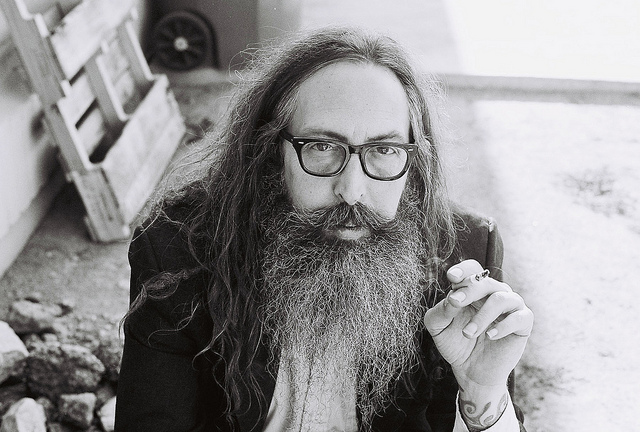These days, some clean shaven men might feel a little effeminate or that they’re living a life lacking of direction.
Perhaps a new addition to your face will remedy any wretched feelings of inadequacy.
Well, that’s the opinion spouted by Beardly.com anyway, a site responsible for the quite brilliant proverb, “A man doesn’t grow a beard. A beard grows a man.” It’s hard to argue with the sentiment. Today, a correlation seems to exist between a man’s beardcraft and his worth to society.
Long gone are the days when a bushy beard was associated with a fugitive on the run from justice, as are the days when friends and family used a term like “Renaissance Man,” or less affectionate terms like drifter and hobo, to ridicule and chastise. The jokes have been replaced by compliments, with some people treating facial hair in the same way a caveman might treat an iPhone. In other words, with awe and amazement.
Now, in the age of selfies and male pouting, the beard communicates a traditional, all conquering image. One of an independent, pioneering protagonist, even if our hero works as a barista in Starbucks. No longer is male dedication measured by vocation—it is now measured by an ability to manscape. But why are men so obsessed with crafting such a unique masculine appearance?
Controversies surrounding the the beard can be traced back to the days of Alexander the Great. The King of the Ancient Greek kingdom of Macedon banned the beard so that it would not be grabbed in combat, while numerous other rulers, including King Henry VIII, Elizabeth I and Peter the Great, introduced a “beard tax,” rendering the beard a prime indicator of wealth and social importance. Believe it or not, in early 18th-century Russia a sort of pay-to-display culture existed, where bearded men were ordered to carry a “beard token” to prove they had paid for the privilege.
Fast forward to the 19th-century, which was a period of unprecedented radical economic and social changes in the United States. Along with the rise of the capitalist market economy and other significant historical events, from controversial elections to scientific advancements, women began to fight for equal rights.
This revolution sent men searching for a new sense of identity, a tangible quality that women couldn’t infringe upon. Firstly, men’s fashion, once dominated by a curvaceous, feminine look, swapped corsets for suave, three-piece suits. After remedying this wardrobe malfunction, everything from side-whiskers to moustaches, and especially monstrous chin-straps (otherwise known as beards) started to dominate the scene.
With some men walking around looking like Daniel Day-Lewis in Gangs of New York (the sadistic, anti-immigrant gang leader with intimidating facial hair who believed revenge was a dish best served cold), a major transformation was evident.
In more recent times, the popularity of beards has, for lack of a better word, grown. A quick Google search on the subject of men with beards generates three image results: George Clooney, Abraham Lincoln and Zach Galifianakis—an unlikely, extremely hairy grouping. These three cultural behemoths possess one commonality: an ability to pull off a fantastic beard.
Some say masculinity no longer has anything to do with wrestling bears or the ability to knot a tie while changing a flat tyre—though both of those are rather impressive. Today, modern masculinity seems to share an intimate relationship with an ability to cultivate a fuzzy, facial forest.
A Beard Team USA exists, for crying out loud. Competitive bearding has been happening in United States since 2003. Phil Olsen, Beard Team USA founder, is one of the “bearders” responsible for the World Beard and Mustache Championships. With categories including “full beard natural,” “full beard styled mustache,” “imperial” and of course, “freestyle,” the global interest in bearding has never been higher.
Growing a beard is the one thing men can do that (most) women can’t, and this fact has led to the expression of masculinity in a very natural way. In the Victorian period, for example, certain beards or sideburns symbolized a gentleman or a stellar sportsman, and even in age of unprecedented technology, men are still embracing very traditional values.
Oddly enough, in the days of Oscar Wilde, not sporting a beard was a rebellious statement that could explain the author, playwright and poet’s clean-shaven look.
Throughout the past 40 years, the opposite has been the case, with the Freddy Mercury handle bar look of the ’70s, the designer stubble of the ’80s and the ’90s grunge-styled stubble all enjoying periods of prominence.
These days, instead of purchasing a flashy car, a man might grow a beard to display real transition in his life. Whether it’s to mourn a lost job or celebrate the absence of the beard-tax, we can’t deny that modern men are turning to facial fuzz to fill the void or nod to modern-masculinity.
~
Author: John Glynn
Editor: Alli Sarazen
Photo: Photo4jenifer/Flickr







Read 1 comment and reply